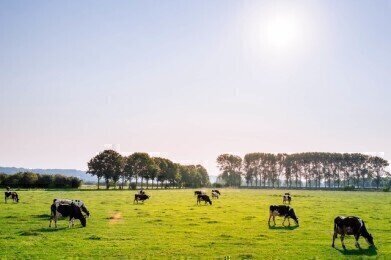GC-MS
Say Cheese! New Parmesan Test Calls Out Phoneys
Jun 15 2016
Spaghetti bolognese is a common dish common — although not in classic Italian cooking and expressly not in the city of Bologna. A good glass of red wine, ground pepper and a sprinkling of ‘parmesan’ are common accompaniments to a good pasta meal. But to really appreciate a good ragu — the cheese has to be PDO Parmigiano Reggiano, the wine should be Chianti and the pepper should be freshly ground.
But all of these accompaniments can suffer from food adulteration. In the case of the cheese, Parmigiano Reggiano is regularly swapped for any old cheese and labelled as parmesan, bulked out with cheaper cheese or even worse, mixed with wood pulp as a filler — and grated cheese is most at risk of adulteration.
A recent paper in the Journal of Agricultural and Food Chemistry — Development of a Quantitative GC–MS Method for the Detection of Cyclopropane Fatty Acids in Cheese as New Molecular Markers for Parmigiano Reggiano Authentication — describes a method designed to help make sure your parmesan is genuine, and gas chromatography is at the heart of it.
PDO Parmigiano Reggiano
Parmigiano Reggiano is a hard cheese that has protected status — PDO or protected designation of origin is an EU designation applied to foodstuffs that come from a specific region and are made by a specific method.
In the case of Parmigiano Reggiano, a few of the characteristics include:
- the raw materials — cow’s milk, salt and calf rennet,
- the milk must come from cows reared in the defined area,
- the cows must be fed primarily on fodder from the defined area, and
- specific production steps must take place in the defined area.
And it is the list of specific characteristics that define the cheese’s PDO that the team used to develop the new test.
It is all in the silage
Silage is a food that is fed to cows when pasture grass is not available. It is fermented grass that is nowadays stored in plastic bales that you might see in fields across the countryside. But for PDO Parmigiano Reggiano cows — silage is not a permitted feed.
The traditional methods of authenticating the cheese uses a free nitrogen determination or amino acid determination — but a more robust method is needed to preserve the characteristics of this special cheese.
Previous work carried out by the team has found that milk and dairy products from cows whose feed included silage contained cyclopropane fatty acids (CPFAs) — produced by the lactic acid-producing bacteria in the silage. So the team developed a GC-MS method to look for CPFA in various cheese samples. Silage free cheese samples — including Parmigiano Reggiano — contained no CPFAs whilst cheese produced from silage fed cows did contain CPFAs. The work suggests that the presence of CPFA could be used as a biomarker of Parmigiano Reggiano‘s authenticity.
Gas chromatography – mass spectrometry is a powerful technique used in many different analysis as described in this article, Adding more Power to your GC-MS Analysis through Deconvolution.
Digital Edition
Chromatography Today - Buyers' Guide 2022
October 2023
In This Edition Modern & Practical Applications - Accelerating ADC Development with Mass Spectrometry - Implementing High-Resolution Ion Mobility into Peptide Mapping Workflows Chromatogr...
View all digital editions
Events
Nov 12 2024 Tel Aviv, Israel
Nov 18 2024 Shanghai, China
Nov 18 2024 Plainsboro, NJ, USA
Nov 20 2024 Karachi, Pakistan
Feb 03 2025 Dubai, UAE














